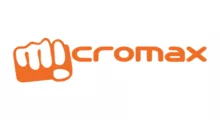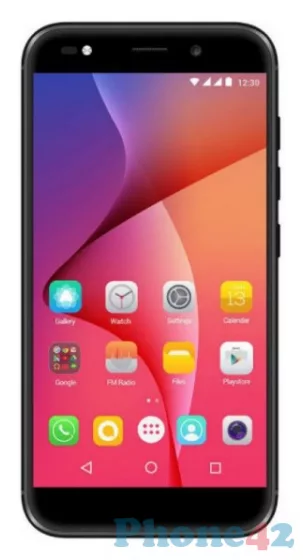
Micromax Selfie 3: Pros and Cons
Micromax announced the launch of the Selfie 3 smartphone in 2017. The manufacturer is offering this smartphone with 5 inch IPS display, Qualcomm Snapdragon 435 MSM8940 SoC, and 3 GB of RAM. The Selfie 3 comes with Android OS v7.0 (Nougat) pre-installed. This phone uses a high resolution 1080 x 1920 px, 5 inch IPS display. This phone has only one rear-camera (13 MP, 4160 x 3120 px, autofocus) on its back for photos and videos. Is the cost justified by its features? I'll strive to answer that by the end of my review.
Table of Contents
- Micromax Selfie 3 specifications
- Weight, dimensions, colors
- System, chipset, performance
- Display type, size, resolution
- Memory, storage
- Cameras, flash
- Connectivity, network, wireless
- Battery type, capacity, charger
- Features, sensors, specials
- Verdict, pros and cons
This article shares our personal experiences and thoughts about using the Micromax Selfie 3 smartphone. We hope to offer helpful insights to others interested in this device. The specifications below are from the official manufacturer data, but we also consider user reviews. If you've seen any mistakes or things missing in these specifications, please let us know.

Micromax Selfie 3 specifications
| Brand | Micromax |
|---|---|
| Name | Selfie 3 |
| Model | E460 |
| Release date | 2017 |
Weight, dimensions, colors
| Colors | black, blue |
|---|---|
| SIM type | Micro SIM |
A micro SIM is larger than the current standard Nano SIM card but smaller than the older SIM card size.
System, chipset, performance
| OS version | Android OS v7.0 (Nougat) |
|---|---|
| SoC | Qualcomm Snapdragon 435 MSM8940 |
| CPU | Octa-core, Quad-core 1.4 GHz Cortex-A53, Quad-core 1.1 GHz Cortex-A53 |
| GPU | Adreno 505 |
The Micromax Selfie 3 comes with Android OS v7.0 (Nougat) out of the box. Android is an open-source operating system. This means the source code is free to the public. This octa-core CPU consists: Octa-core, Quad-core 1.4 GHz Cortex-A53, Quad-core 1.1 GHz Cortex-A53. Smartphones, tablets, and other mobile devices use Adreno GPUs.
Display type, size, resolution
| Display type | IPS |
|---|---|
| Screen size | 5 inch |
| Resolution | 1080 x 1920 px |
| Multitouch support | yes |
People know IPS for its wide viewing angles. It also has accurate color reproduction. The 5 inch display make this smartphone pocket-friendly. The display size is the diagonal distance from one corner of the screen to the opposite corner.
Memory, storage
| RAM | 3 GB |
|---|---|
| Internal storage | 32 GB |
| Memory card slot | microSD |
The smartphone has 3 GB of RAM. It can run many apps at once without much lag or slowness. Having more RAM alone does not guarantee better performance. Generally, a smartphone should have a minimum of 32 GB of internal storage. The Selfie 3 has 32 GB. You can expand the internal storage of the Selfie 3 (32 GB) by using a compatible microSD card.
Cameras, flash
| Main camera | 13 MP, 4160 x 3120 px, autofocus |
|---|---|
| Flash | LED |
| Selfie camera | 16 MP |
You may have budget limits. Or, you may prioritize other features over a multi-camera system. If so, this single camera setup can be a good choice. The Selfie 3 does not have optical image stabilization (OIS).
Connectivity, network, wireless
| GSM 2G bands | 850 / 900 / 1800 / 1900 |
|---|---|
| Network coverage | 2G / 3G / 4G |
| Wi-Fi | Wi-Fi 802.11 b/g/n |
| Bluetooth | v4.2, A2DP |
| GPS | A-GPS |
| NFC | no |
| FM radio | yes |
| USB | microUSB 2.0 |
| Headphone | 3.5 mm jack |
The Micromax Selfie 3 supports 4G/LTE networks. The Selfie 3 supports the latest Wi-Fi standards. You can use Bluetooth to connect your Selfie 3 smartphone to many Bluetooth devices. The Selfie 3 has a GPS receiver. Many fitness and activity tracking apps rely on GPS. It is used to accurately measure and record outdoor activities. The phone isn't NFC (Near Field Communication) capable. NFC is not essential for basic phone functionality, but it can be useful. The 3.5 mm headphone jack allows you to connect wired headphones or earphones to the device.
Battery type, capacity, charger
| Type | Li-Po 3000 mAh |
|---|
The Li-Po 3000 mAh battery gives the smartphone a good battery backup. The lithium polymer (Li-Po) battery is a light-weight, rechargeable battery. You can simply buy a new battery from the open market and interchange it by yourself.
Features, sensors, specials
| Sensors | accelerometer, compass, fingerprint, light, proximity |
|---|---|
| Specials | Dual SIM, Sony Exmor RS |
Today, smartphones come with many sensors. They help make the user experience better. The accelerometer provides information about the smartphone's movement in three axes. These are X (horizontal), Y (vertical), and Z (depth). The fingerprint reader is a biometric security feature found in Selfie 3 smartphones. The light sensor is a type of sensor in a smartphone. It lets the phone measure light intensity around the device. Dual SIM is great for businesses. They want to give staff a device with separate numbers and bills for personal and business use.
Verdict, pros and cons
Every phone has its strengths and weaknesses, and this Micromax phone is no exception. As with any device, there are aspects that shine and others that fall short. By examining both sides, we can paint a complete picture of what this phone has to offer. Let's explore its standout features and areas for improvement. Remember, this is just my opinion, and yours might be different.
Pros
- microSD slot
- Dual SIM support
Cons
- limited-size screen
- single camera setup
- no OIS function
- no 5G support
- no NFC feature
- no Type-C USB port
- low-capacity battery
Please let us know if you find incorrect information or something isn't working. Also, tell us if you have a suggestion for improvement.
 I'm Lucas Bradley, the founder of the Phone42.com site. I love technology, especially smartphones, and I've been working with tech stuff for more than 20 years. This means I've seen a lot of changes and have learned a bunch about what makes a good phone. On Phone42.com, I look at all kinds of phones. They can be from big, well-known companies or new ones trying to make their mark. I want to help people understand what's new and cool in the world of smartphones, in a way that's easy to get.
I'm Lucas Bradley, the founder of the Phone42.com site. I love technology, especially smartphones, and I've been working with tech stuff for more than 20 years. This means I've seen a lot of changes and have learned a bunch about what makes a good phone. On Phone42.com, I look at all kinds of phones. They can be from big, well-known companies or new ones trying to make their mark. I want to help people understand what's new and cool in the world of smartphones, in a way that's easy to get.